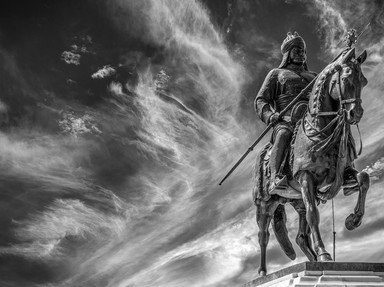Quiz Answer Key and Fun Facts
1. Other than Elizabeth, what are Queen Elizabeth II's other two forenames?
2. Who was the first U.S. President to die in office?
3. Founded in 1510, Santa María la Antigua del Darién was the first European city on the American mainland. In which modern-day country was it located?
4. Which European Union country gained independence from Britain in 1960?
5. For his part in the Clerkenwell bombing, Irishman Michael Barrett was the last person to be publicly hanged in Great Britain. In which year was he executed?
6. How many ships were in the Spanish Armada that was defeated by Sir Francis Drake in 1588?
7. When it was completed in 1880, Cologne Cathedral became the tallest free-standing structure in the world. What succeeded it just four years later?
8. Who was assassinated by Nathuram Godse?
9. Pomerania was an autonomous region ruled by the Dukes of Pomerania from 1121 to 1637. The region now forms the northern half of which two European countries?
10. In which prison, now a World Heritage Site, did Nelson Mandela spend most of his 27 years as a political prisoner?
Source: Author
EnglishJedi
This quiz was reviewed by FunTrivia editor
bloomsby before going online.
Any errors found in FunTrivia content are routinely corrected through our feedback system.


